Yet another installment of the international winter school SCAMT Workshop Week has recently wrapped up at ITMO University. Over the course of a week, more than 40 participants from different Russian cities were attending lectures, collaborating on scientific projects, mastering working with state-of-the-art equipment and just getting to know each other.
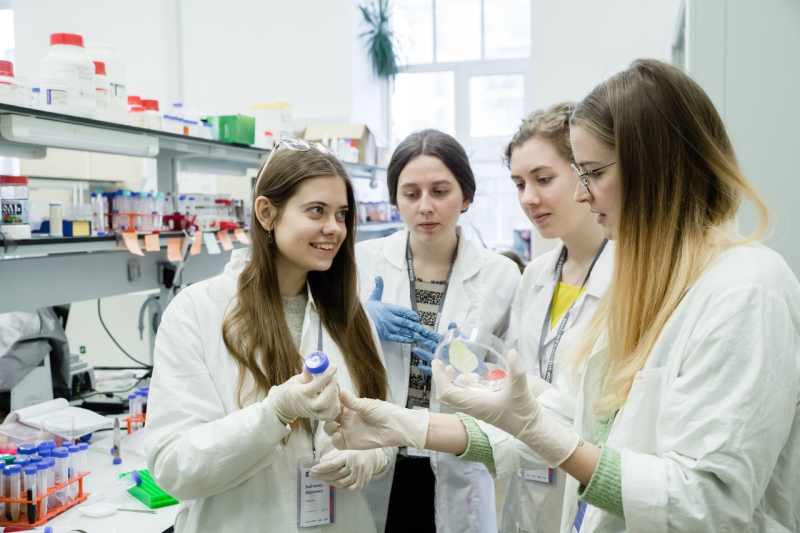
Two times a year, in summer and winter, students majoring in biology, physics, chemistry, and programming gather at ITMO University’s International Research Center SCAMT to take part in the interdisciplinary workshop SCAMT Workshop Week. This year, the event brought together 41 participants from different Russian cities: from Vladivostok and Kaliningrad to Krasnodar and St. Petersburg.
SCAMT Workshop Week is a new format of week-long workshops that allows young scientists from all over Russia to try their hand at working on topical research problems using cutting-edge equipment. At the end of last year, the project was featured in the short-list of the QS Reimagine Education award.
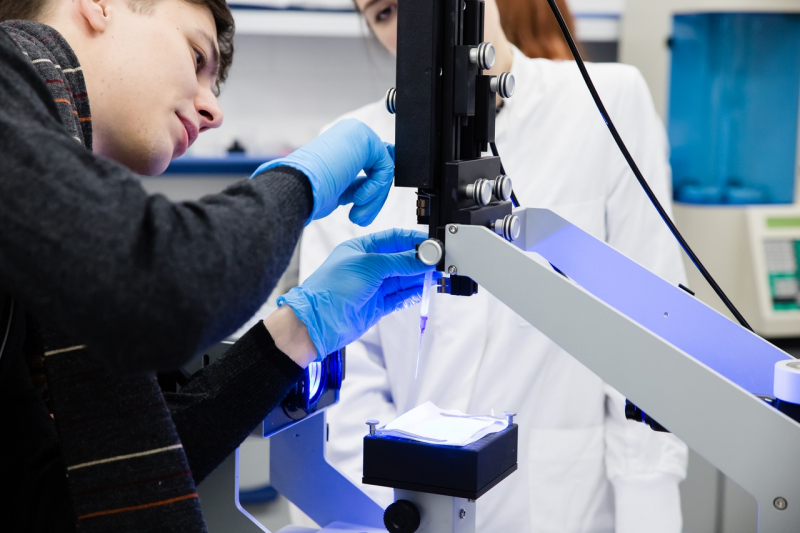
“All participants of the school are divided into groups of three to six people, with each group pursuing their own research project; this year, we’ve had ten of these in total,” says Polina Khapaeva, SCAMT’s director for development. “In a week’s worth of work, they obtain not only theoretical knowledge but also, most importantly, a specific practical result: a nanopharmaceutical drug, a model of the vascular system and so on. The project incorporates the technologies currently being implemented at SCAMT. Of course, these are, above all, educational projects so that the students could develop an understanding of what nanotechnologies are out there and how a fully-fledged product is made. But the school’s format leaves place for the creation of new ideas, which the students can then continue implementing at their universities, by collaborating with us, or by enrolling in our Master’s. We’ve already had cases when an idea was born on our workshop, its author enrolled at SCAMT and now has it in the basis of their Master’s thesis.”
Apart from scientific work, this time the school’s program also includes a comprehensive entertainment aspect. For instance, the workshop’s first day included a science quiz that allowed the participants to better get to know each other before the start of the joint work. What’s more, those of the students who were new to St. Petersburg could participate in a tour of the city. Also awaiting the participants was an open doors day in the quest format: traveling along a specified route, they were learning about each of SCAMT’s 110 research and one industrial laboratories.
Candidates to participate in the workshops were chosen on the basis of a motivation letter and CV, which they submitted on the project’s website. The best students have the opportunity to enroll in ITMO’s Master’s with no additional entrance examinations.
Adelia Kasimova, a student at the Udmurt State University
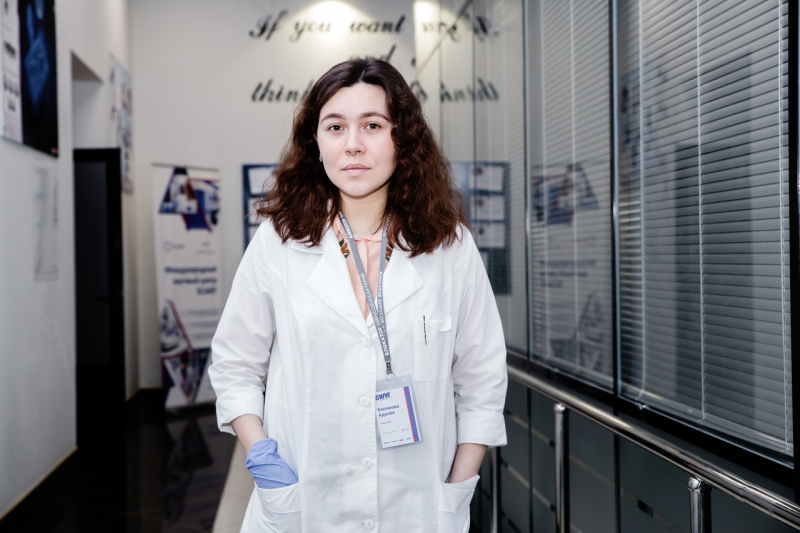
I’m a fourth-year student at the Faculty of Chemistry. The SCAMT Workshop attracted me with its very unique atmosphere and an interesting system of learning; I’ve liked the fact that there’s a lot of practical work and decided to give it a go. A girl from my university attended the last year’s workshop and gave a very positive feedback. What’s more, based on its results the workshop offers the best participants a simplified procedure for enrolling in ITMO’s Master’s.
I joined the project called “Create a memristor better than Elon Musk’s ones”. We’re creating a device that remembers the resistance value depending on the supplied current. Using this, it’s possible to create code for data transmission which in the future can be used for quantum computers because now in 60% of cases the progress is slowed down by the fact that the equipment works too slowly, that the data is transmitted too slowly.
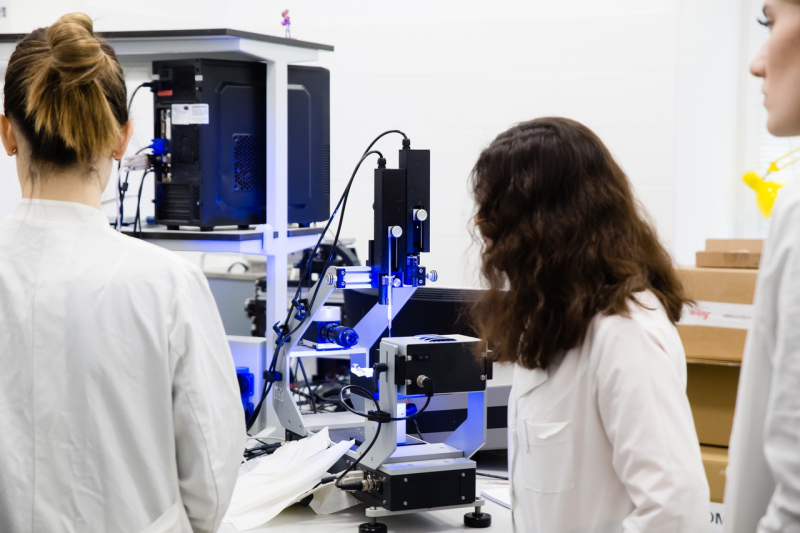
Almost all the methods we used in the course of the workshop were new to me. Memristor is a sort of a sandwich consisting of a conductive material, an insulating layer and another conductive layer. To create a conductive layer, we used the method of photolithography – this is the process of obtaining a pattern on the substrate. You apply the polymer, cover it with a stencil, light it up with ultraviolet light, and then etch the unlit areas to get the desired pattern. After that, we coated this pattern with titanium dioxide ink, and then applied a silver coating as a second electrode.
It’s difficult to describe my emotions when this system started working. It’s really cool to see something that you’ve plodded away so many days on finally working.
Anna Pozhitkova, a student at ITMO University
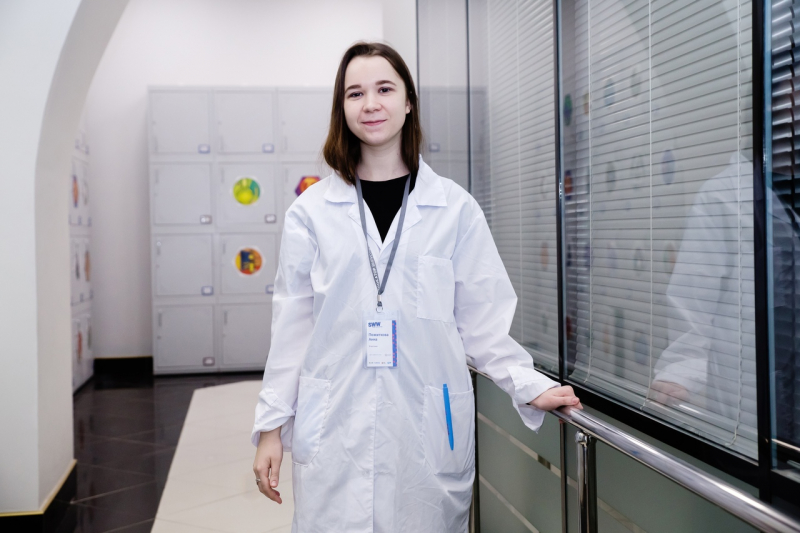
I’m currently majoring in photonics but thinking about continuing my studies at the ChemBio Cluster, which is why I decided to take part in the workshop. Here I’ve been part of the project team “Synthesize a nanopharmaceutical drug”. We’re creating two thrombolytics: one based on magnetite and another on calcium carbonate. We synthesize them by mixing different materials. The final result consists of nano-sized spheres containing the drug.
In order to better immerse myself into the topic, we attended a real-life surgery at the Mariinskaya Hospital to see the blood clot removal process in action. This has been the first such experience for our group, one student almost fainted. But the experience was fascinating, you come out with an understanding that we simply have to develop non-invasive methods of blood clot removal to remove the need of actually digging around, to alleviate the necessity of surgeries.
Alina Gribanova, a student at Voronezh State University
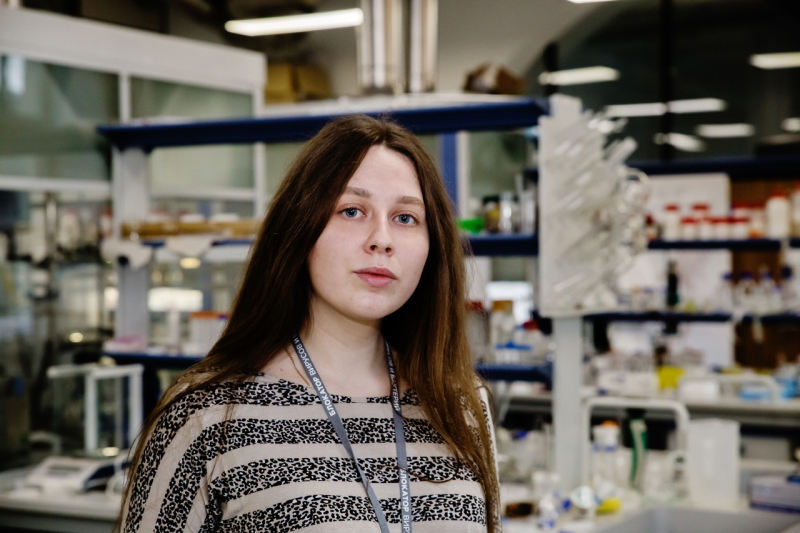
I applied to the workshop because I wanted to try something new, to learn about how other universities’ laboratories work, apart from that, I learned that there is an opportunity of enrolling at ITMO University; I think that’s a great opportunity for self-actualization. I know a lot of people that do science just because they don’t know what else they could do. I’d like to find that something in science that would grip me and motivate me throughout my life.
I’m working as part of the group “Create a model of the vascular system”. This is a very noble goal – to develop a model that would provide adequate data to phase out animal testing. We created two models: one using plant leaves and the other out of spinach and parsley. Plants have a vein system through which minerals enter, and this system resembles the circulatory system of animals and humans. Going forward, our goal is to learn how to clog the vessel and then unclog it.
The second model we’re working on is 3D printing from living cells. You can print a model of a vessel from living cells on a 3D printer for $500. Based on this, you can obtain a stable system suitable for drug testing.
Ivan Kalinin, a student at Lomonosov Moscow State University
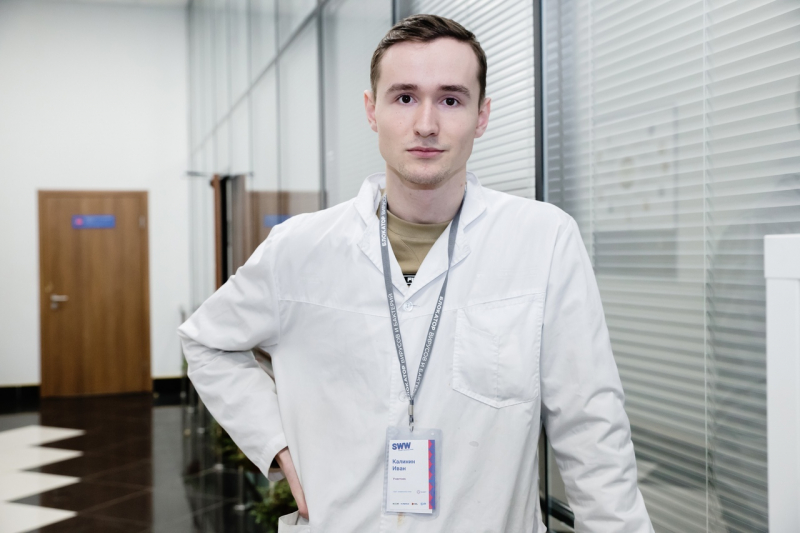
I’d been told about SCAMT by many of my acquaintances, who were speaking of it as a place where a lot of interesting, smart people work. That’s why I wanted to meet them in person, participate in a new project, and try something new in science.
In my group we’re working on the project “Grow your own crystal” – we’re conducting the synthesis of metal-organic frameworks. These are very promising materials that are being applied in various fields of science and technology, including controlled drug delivery, optics, and gas sorption.
In our synthesis process, we use different methods – for example, solvothermal synthesis, where we load the necessary reagents into the autoclave and the resulting crystals are obtained under the impact of temperature and pressure, and the slow diffusion method, where due to reduction in pressure the liquid is drawn in from the capillary, after which two liquids are mixed and the crystals form.
Our task is to see which method is better, what conditions can be changed, and how to optimize the production of crystals. The workshop left a very good impression, there are lots of interesting people working at the forefront of science.
Ilya Mazein, a student at St. Petersburg State University
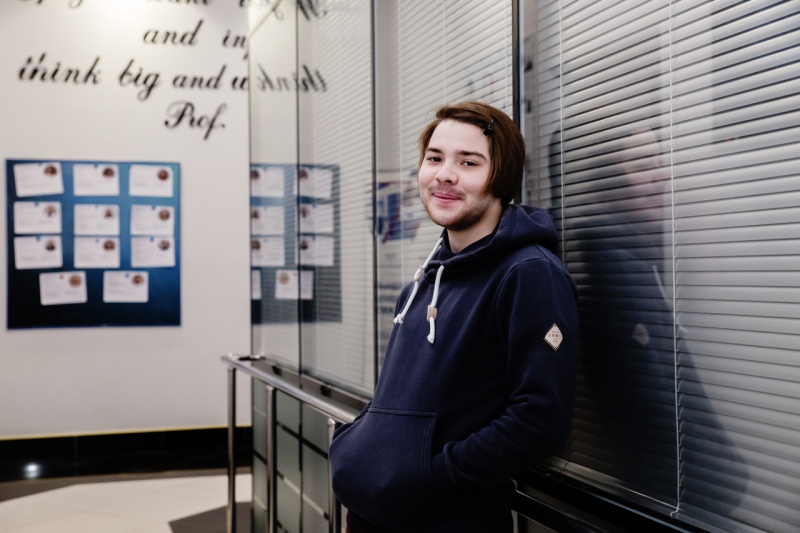
I study at the Faculty of Applied Mathematics; I saw an announcement about this winter school on VK and found it interesting. ITMO is a famous university and I wanted to see what it’s really about.
I’m part of the project on forecasting chemical reactions. All in all, our team consists of two computer science and two chemistry students. The chemists explain about reagents, reaction products, reaction types, their procedure. Then we write a code in which we input all the initial substances, subject it to all possible types of reactions, potential tree diagrams of ways of how this or that reaction would proceed, and then compare the end result to the reaction products and choose the most probable reaction behavior.
It’s useful to understand all this because it’s not always clear what happens at the interim stages: we know what’s there in the beginning and what we get in the end, but the contents of the middle part are tricky to determine. And this is important, because when we understand what’s happening, we can do much more with the reaction, conduct interim interventions, have better control over the whole process.
This was really interesting because chemistry is a quite faraway field from mine, I enjoyed seeing how it actually interacts with informatics and gaining a better understanding of what happens there.
Daniil Shushunin, a student at Ivanovo State University
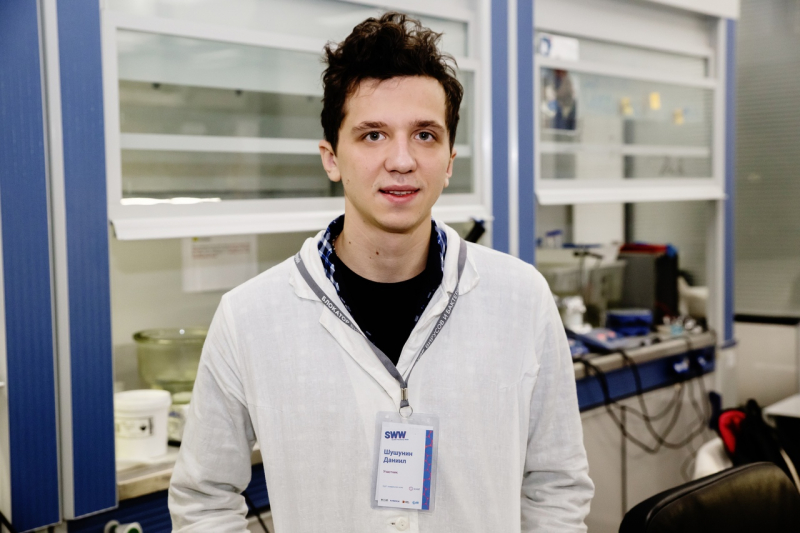
I got told about the workshop by my research supervisor. I saw that there was a project on carbon nanoconstructors – we often talked about carbon tubes in my university program, and I thought, why not.
In our project, we precipitate carbon from the gaseous phase. We make different solutions: ones that use hydrogen peroxide and ones that don’t, and then we impact the samples with propane or we don’t. After that, we compare what happens to the samples.
Following this stage, we evaluate the developments with the help of electron microscopy: what we’ve done, how nanofibers grow on a carbon substrate, and we use the nanoconstructors’ carbon properties as biosensors.
What I’ve found the most memorable is electron microscopy, I’ve heard a lot about it at my university; we don’t have the technology, but here you can zoom in up to 500 nanometers and see all the tiny molecules – it’s great, definitely something to tell others when I return to my uni.
Anastasia Tsareva, a student at Udmurt State University
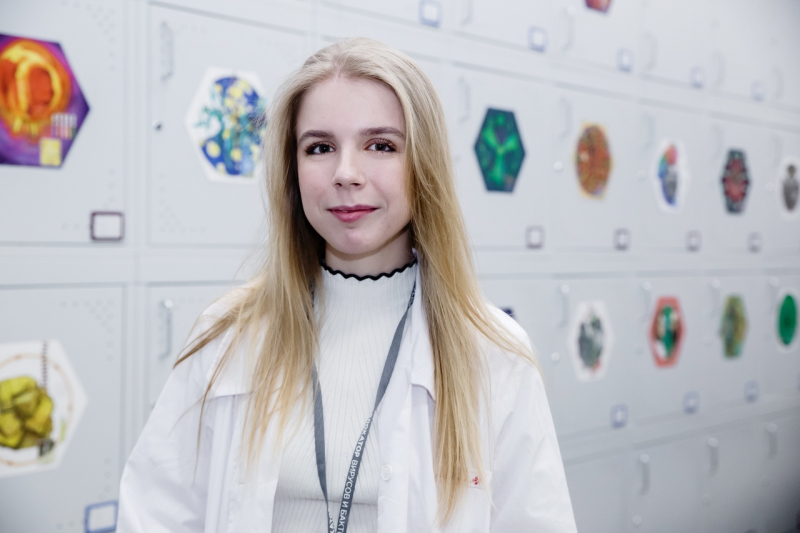
A friend of mine attended the workshop last year, she said that she’d really enjoyed it and that here there was an opportunity to work on the equipment we don’t have, try your hand at new projects and meet new people.
In our project, we collect natural spider silk and synthesize it with particles of magnetite, hafnium oxide, rare-earth elements. We do this to obtain luminous web fibers. It can be used for implants coating because under a certain radiation this material begins to glow.
Our group consists of three girls, and we really don’t like spiders – but we had to work with them, take them out of their boxes, feed them, and collect the web with our hands. You can understand what kind of stress this put us under, but actually we really enjoyed the experience. The people working here are amazing, and there’s a very friendly, cool ambiance.
Anastasia Egoraeva, a student at Far Eastern Federal University

I’m studying in Vladivostok and have long thought about doing my Master’s in St. Petersburg or Moscow. So when I saw that ITMO University’s SCAMT Center was to host a winter school, I got really interested. The project I’m working on is the assembling of the so-called DNA nanorobots. First we were making DNA cubes, which deliver a drug into a cell, penetrating it by means of cholesterol.
Also from the individual DNA chains, we then focused on assembling a special DNA nanomachine which locates the sequence of a pathogen or protein which the cell needs and with which the cell is specifically associated. The nanomachine untangles this connection, which gives us a way to treat cancer.
Everything we did as part of the project was interesting to me – there was a lot of hands-on work, which I enjoyed, we did all sorts of calculations, digged out the necessary substances, set the electrophoresis, the agarose gel electrophoresis, the polyacrylamide gel electrophoresis. I also really liked the lectures we had.
Irina Tamanyan, a student at ITMO University
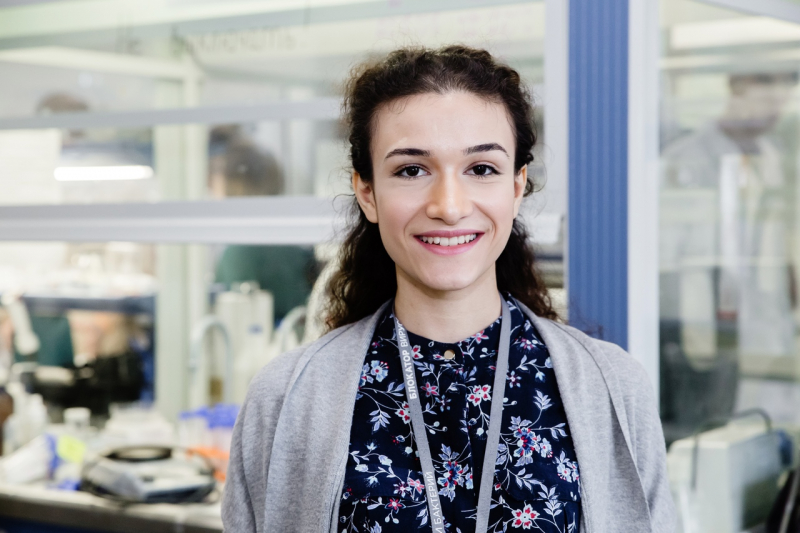
I’m studying at the Faculty of Food Biotechnologies and Engineering and want to move forward in my research work and gain more knowledge, and this is why I got interested in participating, though the school’s focus isn’t exactly similar to what I normally do.
In our group, we’re working on a project that aims to generate enough electricity to power a lightbulb using the activity of a microbial community. Drawing on the data we collect from the related literature, we select the optimal bacteria strains, create a nutritive medium for them to multiply, and connect them with graphite electrodes to track how much electricity they produce. After that, we incorporate titanium dioxide, zinc dioxide, magnetite nanoparticles into the medium. As these particles kill the bacteria, they need to be added in very small quantities so as not to destroy the entire microbial community but to make the bacteria “understand” the danger and multiply more actively, generating even more energy.
What I’ll remember is how we’ve worked in special sterile cabines – it was important that everything constantly be sterile. Another memorable thing was that we weren’t given any methodological guidelines, we searched for the right strains, nanoparticles and their sizes on our own. This is a very creative approach to tasks.
Sofya Plegunova, a student at Siberian State Industrial University
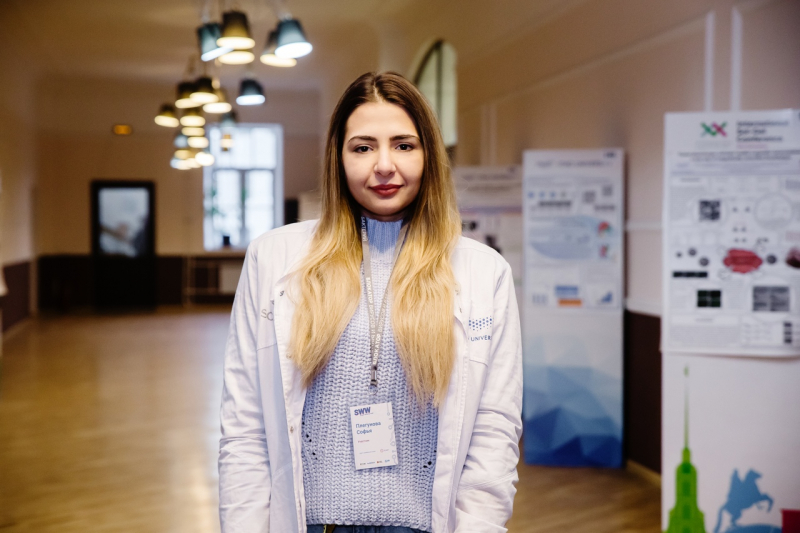
I’m considering applying to ITMO for my Master’s studies; I got told about the school by my research supervisor and decided to submit my application. To be honest, I wasn’t expecting for it to be accepted, but I got an email that I made it, this was great news.
The project I’m part of is dedicated to creating a microfluidic chip – we create molds from plastic, indent them with small channels, which we then fill in with the polydimethylsiloxane, a substance similar to soft plastic with a jelly-like consistency. These channels allow for a passing through of a liquid which can then be mixed with different reagents so that a blood test can be performed.
Currently, in order to conduct a blood test you need to extract blood, take it to a laboratory, give it a run in a centrifuge, pour it into test tubes, and add different reagents. Using the chip, you can do a general blood test here and now, just like a sugar test. The most interesting moment was when we pushed the liquid through and watched it run along the channels under ultraviolet light. This all the more interesting since we hadn’t succeed the first time and were afraid that the second time it wouldn’t work either. When everything worked, my emotions went off the scale, I didn’t want to leave the lab and just continue working.
This SCAMT Workshop Week was sponsored by the companies BIOCAD, MERCK, Dodo Pizza and the youth nonprofit AEGEE.
(author Konstantin Krylov)